Mold on Hardwood Floors – San Diego CA
Are your hardwood floors showing signs of discoloration or a musty odor? You could be dealing with a silent intruder – mold. Hardwood floor mold damage can be a serious problem, causing damage to both the floorboards and your indoor air quality. However, with proper detection and prevention methods, you can keep your hardwood floors mold-free and maintain a healthy living environment.
In this article, we will explore how to detect and prevent mold on hardwood floors, ensuring your flooring investment stays protected for years to come. We will discuss the telltale signs of mold growth on hardwood floors, including discoloration, warping, and a foul smell. Additionally, we will provide valuable insights into the common causes of mold growth, such as excessive moisture and poor ventilation.
Armed with this knowledge, you will not only be able to identify early signs of mold but also understand the preventive measures you can take to keep it at bay. From controlling humidity levels to implementing regular cleaning routines, we will share practical tips and techniques to help you maintain a mold-free environment and preserve the beauty of your hardwood floors.
Remember, early detection and proactive prevention are key to safeguarding your hardwood floors from the destructive effects of mold. Let’s dive in and learn how to protect your flooring investment from this silent intruder.
Understanding Mold and Its Dangers
Mold is a type of fungus that thrives in damp and humid environments. It reproduces by releasing spores into the air, which can easily spread and settle on surfaces. While some molds are harmless, others can pose serious health risks, especially for individuals with respiratory conditions or weak immune systems. When mold starts growing on hardwood floors, it not only compromises the structural integrity of the wood but also releases spores that can contaminate the air you breathe.
To properly address mold on hardwood floors, it’s essential to understand the dangers it poses. Mold can cause allergic reactions, respiratory issues, and even infections. If left untreated, it can spread to other areas of your home and cause extensive damage. By familiarizing yourself with the signs of mold and its potential risks, you can take prompt action to prevent further damage and protect your health.
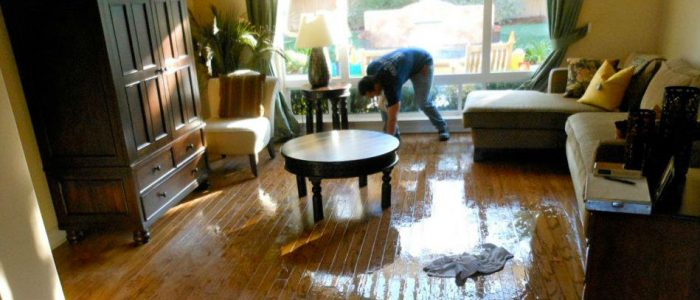
Signs of Mold on Hardwood Floors
Detecting mold on hardwood floors is crucial for preventing its spread and minimizing damage. While mold often thrives in hidden or hard-to-reach areas, there are several telltale signs that can help you identify its presence. Discoloration is one of the most noticeable signs of mold growth on hardwood floors. If you notice dark or black spots on the surface of your wood, it’s likely mold has taken hold.
Warping and buckling of hardwood floorboards is another clear indication of mold growth. As moisture seeps into the wood, it can cause the boards to swell and distort, resulting in uneven or raised areas. Additionally, a musty or damp smell emanating from your hardwood floors can be a strong indicator of mold. If you detect a foul odor that persists even after cleaning, it’s essential to investigate further for possible mold infestation.
By staying vigilant and regularly inspecting your hardwood floors, you can catch mold growth in its early stages and address it before it becomes a more significant issue. Remember, prevention is always better than cure when it comes to mold on hardwood floors.
Causes of Mold on Hardwood Floors
Understanding the common causes of mold on hardwood floors is crucial for effective prevention. Excessive moisture is the primary catalyst for mold development. If your hardwood floors are consistently exposed to high levels of humidity, water leaks, or flooding, it creates an ideal environment for mold to thrive. Poor ventilation is another common factor that contributes to mold growth. Without proper airflow, moisture can become trapped underneath the floorboards, providing the perfect breeding ground for mold.
Inadequate maintenance and cleaning routines can also lead to mold growth on hardwood floors. Neglecting spills, failing to dry the floors properly, or using excessive amounts of water during cleaning can introduce moisture into the wood, inviting mold to take hold. It’s crucial to adopt regular cleaning practices that minimize the risk of mold growth and ensure the longevity of your hardwood floors.
By addressing the underlying causes of mold growth, such as moisture and poor ventilation, you can significantly reduce the chances of mold infestation on your hardwood floors. Next, we will explore preventive measures you can take to keep your floors mold-free.
Preventive Measures to Avoid Mold on Hardwood Floors
Prevention is the key to maintaining mold-free hardwood floors. By implementing the following preventive measures, you can significantly reduce the risk of mold growth and protect your flooring investment:
1. Control humidity levels: Keep the humidity in your home between 30% and 50% to discourage mold growth. Use dehumidifiers in areas prone to excess moisture, such as basements or bathrooms.
2. Ensure proper ventilation: Proper airflow is essential for keeping hardwood floors dry and mold-free. Open windows, use exhaust fans and install vents to allow air circulation and prevent moisture buildup.
3. Clean up spills promptly: Wipe up any spills or standing water immediately to prevent moisture from seeping into the wood. Use absorbent materials like towels or microfiber cloths to soak up excess liquid.
4. Use area rugs or mats: Place rugs or mats in high-traffic areas, entryways, and kitchens to catch dirt, and moisture, and prevent it from reaching your hardwood floors.
5. Avoid excessive water during cleaning: When cleaning your hardwood floors, use a damp mop or microfiber cloth rather than saturating the surface with water. Excessive moisture can seep into the wood and promote mold growth.
6. Regularly inspect and maintain: Conduct regular inspections of your hardwood floors for any signs of water damage, discoloration, or warping. Address any issues promptly to prevent mold from spreading.
By incorporating these preventive measures into your routine, you can create an environment that is inhospitable to mold on hardwood floors.
If you do detect mold on your hardwood floors, prompt action is necessary to prevent its spread and minimize damage. While small areas of mold growth can often be cleaned and treated on your own, larger infestations may require professional assistance. Here’s a step-by-step guide to cleaning and removing mold on hardwood floors:
1. Safety first: Before starting the cleaning process, put on protective gear, including gloves, goggles, and a mask, to prevent exposure to mold spores.
2. Contain the area: Seal off the affected area to prevent the spread of mold spores to other parts of your home. Use plastic sheets or tarps to create a barrier.
3. Remove loose mold: Use a vacuum cleaner with a HEPA filter to carefully remove loose mold spores from the affected area. Be sure to dispose of the vacuum bag outside your home.
4. Clean with a mold-killing solution: Mix a mold-killing solution according to the manufacturer’s instructions or use a homemade solution of water and vinegar or hydrogen peroxide. Scrub the affected area thoroughly using a brush or sponge.
5. Dry the area: After cleaning, ensure the area is thoroughly dried to prevent mold from returning. Use fans, dehumidifiers, or open windows to facilitate drying.
6. Dispose of contaminated materials: If any materials like carpets or rugs are heavily infested with mold, it’s best to dispose of them to prevent further contamination.
Remember, if the mold infestation is extensive or you are unsure about the proper cleaning techniques, it’s always advisable to seek professional mold remediation services.
While professional assistance may be necessary for extensive mold infestations, there are several DIY solutions you can try for prevention and removal of mold on hardwood floors. These methods can be effective for small areas of mold growth or as preventive measures to keep your floors mold-free:
1. Borax and water solution: Mix 1 cup of borax with 1 gallon of water to create a mold-killing solution. Apply the mixture to the affected area using a sponge or spray bottle, scrub thoroughly, and rinse with clean water.
2. Tea tree oil spray: Dilute 1 teaspoon of tea tree oil in 1 cup of water and spray it onto the mold-affected area. Allow it to sit for a few minutes, then scrub and rinse with clean water.
3. Hydrogen peroxide solution: Mix equal parts of hydrogen peroxide and water in a spray bottle. Spray the solution onto the mold, let it sit for 10 minutes, then scrub and rinse with water.
4. Vinegar solution: Fill a spray bottle with undiluted white vinegar and spray it onto the mold. Let it sit for an hour, scrub thoroughly, and rinse with clean water.
These DIY solutions can help remove small areas of mold growth and prevent the recurrence of mold on hardwood floors. However, it’s important to note that they may not be as effective for extensive or persistent mold infestations.
Hiring Professional Mold Remediation Services
In cases of extensive mold growth or persistent infestations, it is highly advisable to hire professional mold remediation services. Mold remediation experts have the knowledge, experience, and specialized equipment to effectively assess the extent of the mold problem, safely remove and dispose of mold-infested materials, and restore your hardwood floors to their original condition.
Professional mold remediation services can provide a comprehensive solution to your mold problem, ensuring that all affected areas are thoroughly treated and preventing the risk of further mold growth. They can also identify and address any underlying issues that may have contributed to the mold infestation, such as leaks or poor ventilation.
When choosing a mold remediation company, be sure to research their qualifications, certifications, and customer reviews. Look for a reputable company with a proven track record in mold remediation to ensure the best results for your hardwood floors.
Once you have successfully cleaned and removed mold from your hardwood floors or implemented preventive measures, it’s important to maintain a mold-free environment to preserve the beauty and longevity of your floors. Here are some best practices to follow:
1. Regularly clean and dust: Regularly sweep, vacuum, or use a dry mop to remove dust and debris that can trap moisture and promote mold growth.
2. Keep humidity levels in check: Monitor and control humidity levels in your home using dehumidifiers or air conditioners. Avoid excessive moisture buildup, especially in areas prone to high humidity.
3. Address water leaks promptly: If you notice any water leaks or plumbing issues, address them promptly to prevent moisture from seeping into your hardwood floors.
4. Ensure proper ventilation: Maintain proper airflow and ventilation throughout your home, especially in areas with high humidity, such as bathrooms and kitchens.
5. Use natural light: Open curtains or blinds during the day to allow natural light to reach your hardwood floors. Sunlight helps prevent mold growth by drying out moisture.
6. Regular inspections: Conduct regular inspections of your hardwood floors for any signs of discoloration, warping, or moisture. Address any issues immediately to prevent mold from spreading.
By following these best practices, you can maintain a mold-free environment and enjoy the beauty and durability of your hardwood floors for years to come.
There are several misconceptions about mold growth on hardwood floors that may lead to ineffective prevention or remediation efforts. Let’s address some of these misconceptions:
1. Myth: Hardwood floors cannot develop mold.
Reality: While hardwood floors are less susceptible to mold compared to other materials, they can still develop mold if exposed to excessive moisture or poor ventilation.
2. Myth: Bleach can effectively remove mold from hardwood floors.
Reality: While bleach is commonly believed to kill mold, it is not effective in removing mold from porous surfaces like wood. It may only lighten the appearance of mold without eliminating it completely.
3. Myth: Once the mold is removed, there is no need for preventive measures.
Reality: Mold spores are microscopic and can easily spread and settle on surfaces. Implementing preventive measures is crucial to minimize the risk of future mold growth.
4. Myth: Mold on hardwood floors will go away on its own.
Reality: Mold infestations will not resolve themselves without proper remediation and preventive measures. Leaving mold untreated can result in further damage and health risks.
By dispelling these misconceptions and understanding the realities of mold growth on hardwood floors, you can take informed actions to effectively prevent and address mold infestations.
Mold growth on hardwood floors can be a persistent and damaging problem if not detected and addressed promptly. By familiarizing yourself with the signs of mold, understanding the causes, and implementing preventive measures, you can maintain a mold-free environment and protect your flooring investment.
Remember to regularly inspect your hardwood floors for signs of mold, control humidity levels, ensure proper ventilation, and address any water leaks promptly. In case of mold infestations, consider DIY solutions for small areas or seek professional mold remediation services for extensive or persistent problems.
By adopting best practices for maintaining mold-free hardwood floors and dispelling common misconceptions, you can enjoy the beauty and durability of your hardwood floors while safeguarding your health and indoor air quality. Take proactive steps today to keep the silent intruder – mold – at bay and preserve your hardwood floors for years to come.

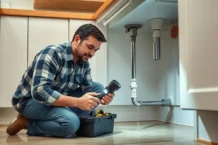
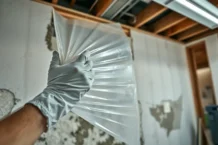
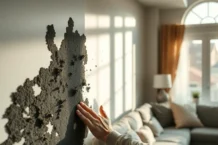

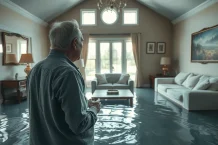
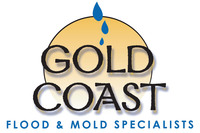


Follow Us!